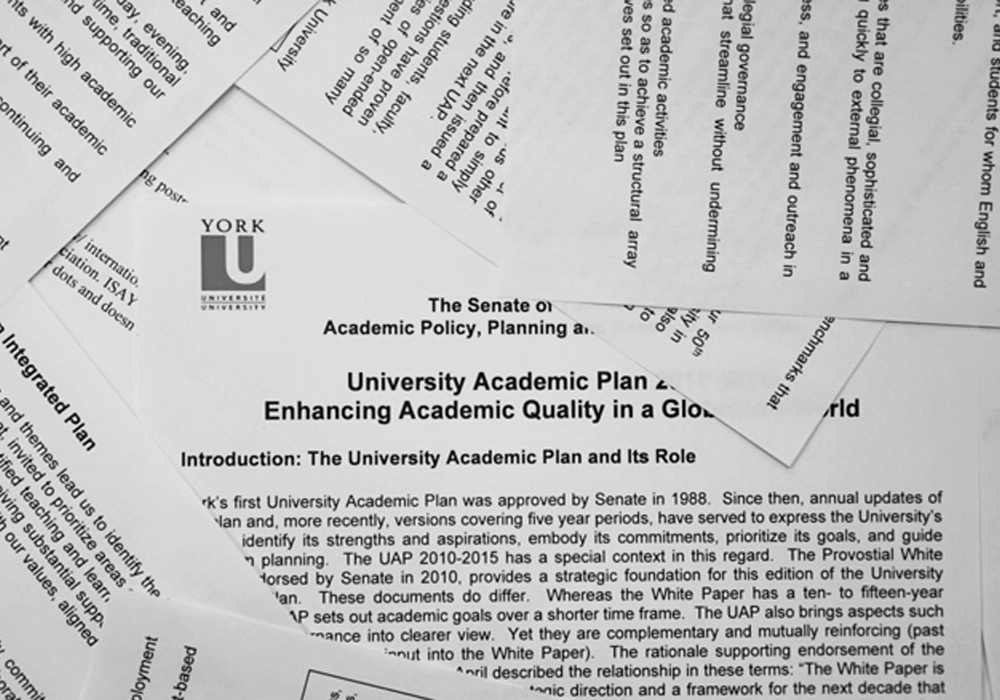Alex Kvaskov
Assistant News Editor
York Senate, the university’s primary academic planning body, is becoming less and less transparent, according to Senators speaking at Senate last week. They are accusing York’s senior administration of forcing a top-down planning model on the school’s academics.
According to Lorna Weir, sociology professor, there has been an “exponential increase” in the number of in-camera Senate executive sessions between the 2008 and 2015 strikes.
More frequent and longer in-camera sessions raise the possibility of an increasing amount of university business discussed privately, with limited collegial consultation and oversight.
Meanwhile, Ricardo Grinspun, economics professor, urges Senate to reject the draft University Academic Plan 2015-2020 for, what he claims, are deficiencies in the plan’s conception and execution.
Other concerns expressed at Senate include an alleged lack of mental health support training for faculty and changing Senate policies.
Grinspun says the planning process leading up to the UAP, the document which will dictate York’s academic policies over the next five years, has been “troubling from the outset.”
“It is fundamentally a top-down document befitting the managerial governance style of our leadership,” says Grinspun.
“Provost Rhonda Lenton claims it (UAP) has been prepared through a participatory and bottom-up process, but the reality is more complex,” adds Grinspun.
Grinspun acknowledges certain details in the UAP have received input from various stakeholders, but claims the very base of the document, including its basic orientation and main message, have never been open for discussion.
Moreover, contract faculty are absent in discussions about academic planning, according to Grinspun, while their growing number contradicts York’s stated aims of student success and quality teaching and learning.
“In the Academic Planning Forum called in December to discuss the UAP, my working group voiced a concern about the absence of contract faculty, the majority of the teachers in the university, in the academic planning process,” he says.
“Not surprisingly, the input provided at that APF was fully ignored in the draft document. The suppressing of one of the major challenges our university faces, the precarization and silencing of academic labour, is consistent and ongoing,” he adds.
Additionally, the UAP ignores demands from many across the university to afford pride-of-place to issues like academic freedom, corporatization, and collegial governance.
“I hope that Senate will find the wisdom to reject such an imbalanced and inappropriate document,” states Grinspun.
Rhonda Lenton, vice president of academic and provost, hit back sharply at Grinspun’s allegations, claiming York adheres to the tenets of collegial governance and bottom-up planning.
Lenton says the current UAP follows the same process used in the past
“In broad strokes, the development of the UAP is an iterative process that is both informed by divisional. Faculty-level plans, in turn, informs them,” she adds.
Joanne Rider, York media, says Senate materials posted online along with a posted statement on open meetings ensures transparency and accessibility.
Rider points to the handbook which states Senate is open to the university community unless it duly resolves to move into closed session.


